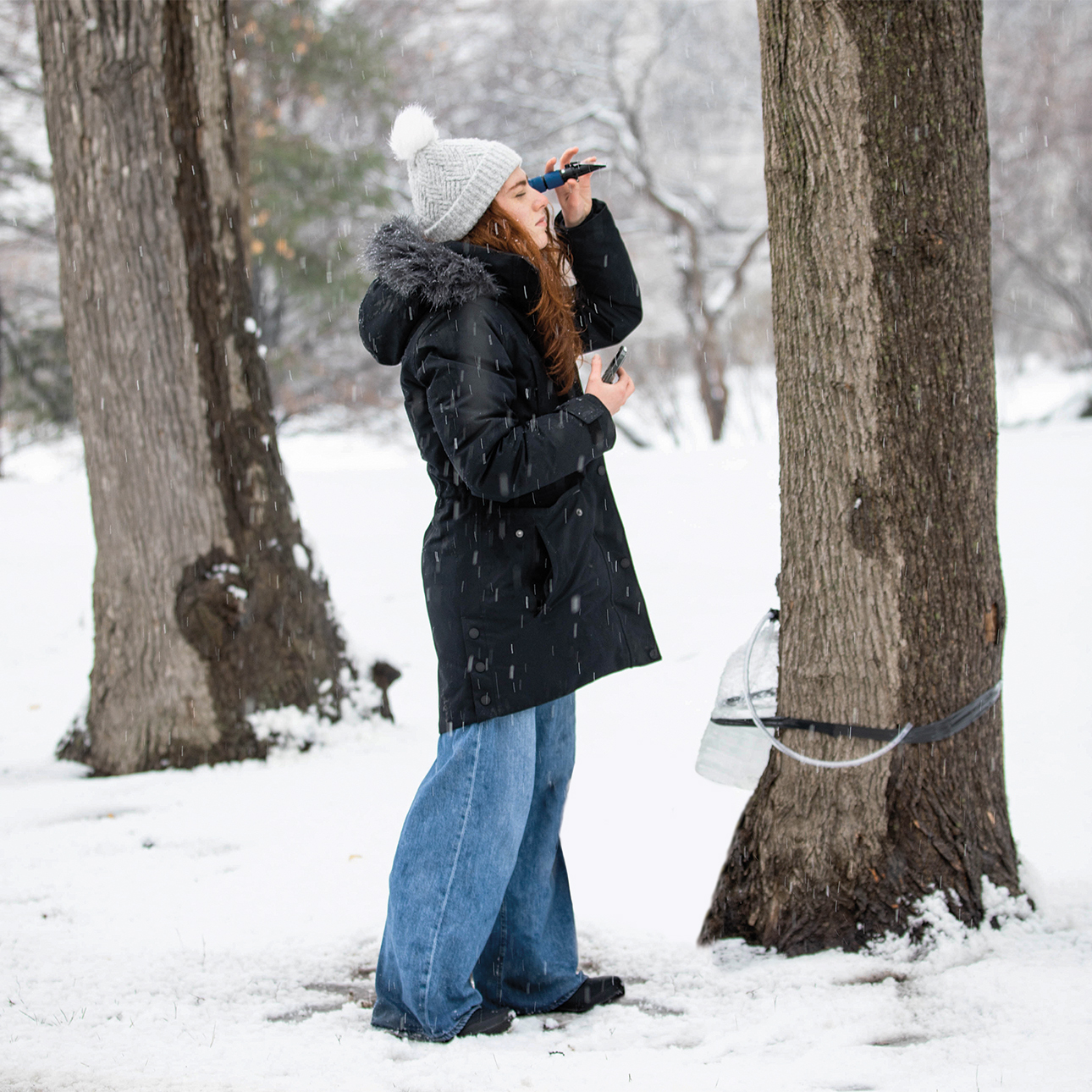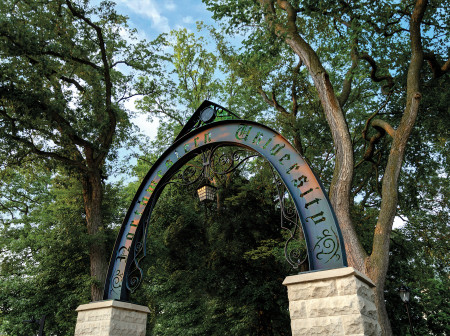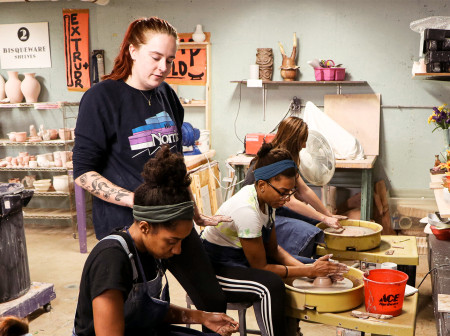Walking around the Evanston campus this winter, you may notice 1-gallon jugs attached to maple trees, slowly filling with a clear liquid — raw sap.
Students in the Maple Syrup and Climate Change course, taught by assistant professor of instruction Eli Suzukovich III, are tapping sugar, silver and Norway maples on campus to examine the local effects of climate change on soil and plant life. They record air and ground temperatures around the trees, sap flow rates and more.
Students also learn about the maple syrup industry, including maple tapping by both Native American and non-Native harvesters, farmers and companies, as well as how Indigenous people today use maple tapping for food sovereignty — a people’s right to food that is healthy, culturally appropriate and sustainably produced.
“We learned a ton about Indigenous culture and the importance of trees, spices and sugar,” says Julianna Zitron, a fourth-year journalism student who took the course last winter. “I loved [that] this class was more than just [classroom] learning. … My favorite days were when we walked around and learned about the plants and animals that [live here].
“It was super interesting to see the impacts of climate change on our own campus. One of the trees we tapped, the big maple tree on Deering [Meadow] lovingly known as Big Mama, produced a ton of sap, while some of our other trees produced very little.”
Big Mama is located close to Sheridan Road, where car emissions and concrete sidewalks have had notable effects on the tree. “The levels of lead and copper [in the soil near] Big Mama were the highest of all our [samples],” Zitron says. “Luckily Big Mama’s size allowed her to [keep producing] a ton of sap.”
At the end of the course some of the students boil down their sap collections for a sweet reward — pure, homegrown maple syrup.




Reader Responses
No one has commented on this page yet.
Submit a Response